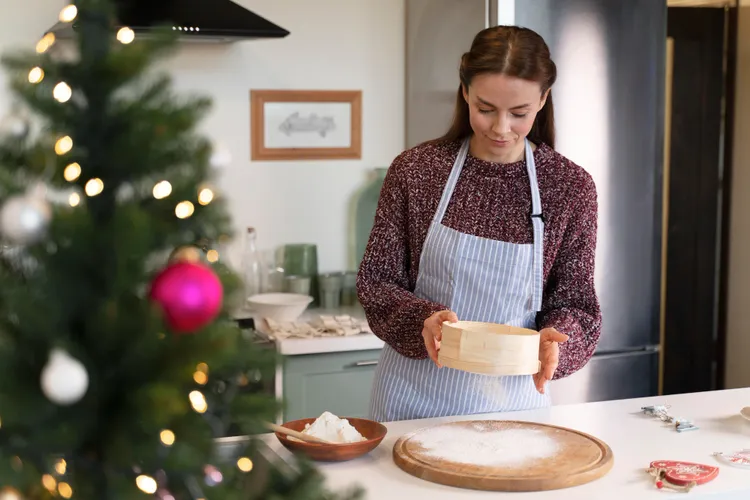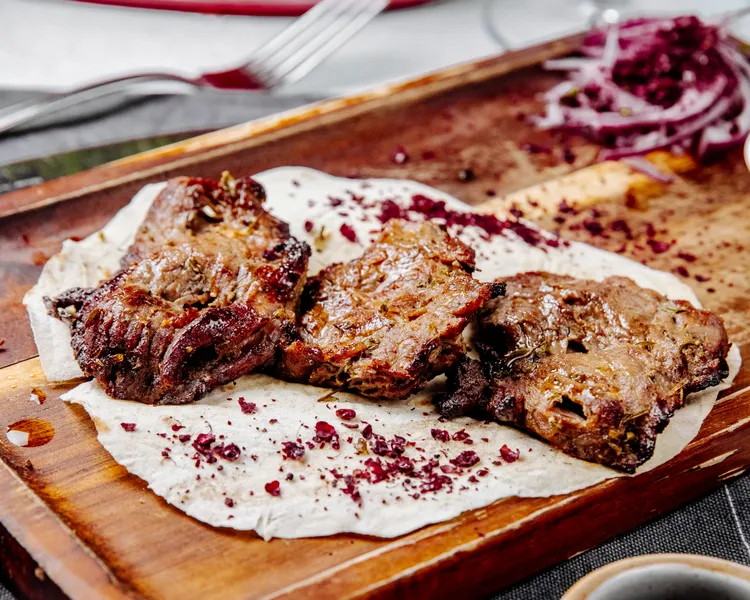Foods You’re Eating Wrong: Unlock Their Full Potential with These Tips
We all have our go-to foods, from staples like eggs and rice to treats like chocolate and avocados. But what if the way you’re preparing, cooking, or eating these foods is robbing them of their flavor, nutrients, or versatility? Many common foods are consumed in ways that don’t maximize their health benefits, taste, or shelf life. We’ll explore foods you might be eating wrong, why your current habits could be holding you back, and how to enjoy these foods the right way. Backed by science and practical tips, this guide will help you rethink your kitchen routines and elevate your culinary game - whether you’re a seasoned cook or a beginner.

Why How You Eat Matters
The way you prepare, cook, and consume food can significantly impact its nutritional value, taste, texture, and even safety. Common mistakes - like overcooking vegetables, storing foods improperly, or pairing them with the wrong ingredients - can diminish their benefits or make them less enjoyable. By making small tweaks to how you handle these foods, you can:
- Maximize Nutrients: Preserve vitamins and minerals that are often lost through improper cooking or storage.
- Enhance Flavor: Bring out the natural taste of foods with better preparation techniques.
- Improve Digestion: Make foods easier for your body to process and absorb.
- Reduce Waste: Extend shelf life by storing or preparing foods correctly.
- Elevate Enjoyment: Discover new textures, flavors, and pairings that make eating more exciting.
With that in mind, let’s dive into the top foods you might be eating wrong, why your current methods aren’t ideal, and how to do it better.
- Broccoli: Overcooking Kills Nutrients
- What You’re Doing Wrong: Boiling or overcooking broccoli until it’s mushy or dull green. This destroys heat-sensitive nutrients like vitamin C and sulforaphane, a compound linked to cancer prevention.
- Why It Matters: Overcooking reduces broccoli’s antioxidant power and makes it less palatable, with a soggy texture and bitter flavor.
- How to Eat It Right:
- Steam Lightly: Steam broccoli for 3-5 minutes until bright green and crisp-tender to preserve nutrients and flavor.
- Sauté or Roast: Toss with olive oil, salt, and pepper, then roast at 425°F (220°C) for 15-20 minutes for a caramelized, nutty flavor.
- Eat Raw: Add raw florets to salads or dip them in hummus for maximum nutrient retention.
- Pro Tip: Pair broccoli with a source of vitamin C (like lemon juice) to enhance iron absorption from its leaves and stems.
- Eggs: Always Cooking the Yolks Fully
- What You’re Doing Wrong: Cooking eggs until the yolks are fully hard (e.g., in hard-boiled eggs or overcooked scrambles). This can reduce the availability of nutrients like choline and make eggs less versatile.
- Why It Matters: Runny or soft yolks retain more of their healthy fats and antioxidants, like lutein, which supports eye health. They also offer a creamier texture for better flavor.
- How to Eat It Right:
- Soft-Boil or Poach: Cook eggs for 6-7 minutes for soft-boiled or poach for 3-4 minutes to keep yolks runny.
- Sunny-Side Up or Over-Easy: Fry eggs lightly to maintain a soft yolk for dipping or sauces.
- Use in Sauces: Blend soft yolks into dressings like Caesar for a rich, creamy texture.
- Pro Tip: Choose pasture-raised eggs for higher omega-3 content and better flavor.
- Tomatoes: Storing Them in the Fridge
- What You’re Doing Wrong: Keeping tomatoes in the refrigerator, which dulls their flavor and makes them mealy. Cold temperatures disrupt the enzymes responsible for tomatoes’ sweet-tangy taste.
- Why It Matters: Refrigeration reduces volatile compounds that give tomatoes their aroma and flavor, making them less enjoyable.
- How to Eat It Right:
- Store on the Counter: Keep tomatoes at room temperature, out of direct sunlight, to maintain flavor and texture.
- Use When Ripe: Eat tomatoes when they’re fully ripened (soft but not mushy) for peak flavor.
- Cook for Nutrition: Cooking tomatoes (e.g., in sauces or roasting) increases lycopene, an antioxidant linked to heart health and cancer prevention.
- Pro Tip: If tomatoes are overripe, store them in the fridge for 1-2 days to slow spoilage, but bring them to room temp before eating.
- Pasta: Rinsing After Cooking
- What You’re Doing Wrong: Rinsing cooked pasta under cold water to remove stickiness. This washes away the starch that helps sauces cling to the pasta and dilutes flavor.
- Why It Matters: The starch on pasta’s surface enhances sauce adhesion, creating a cohesive dish. Rinsing also cools the pasta, which can affect texture in hot dishes.
- How to Eat It Right:
- Cook Al Dente: Boil pasta until just tender (al dente) to maintain texture and flavor.
- Reserve Pasta Water: Save a cup of starchy cooking water to add to sauces for better consistency and binding.
- Toss Immediately: Mix hot pasta with sauce right after draining to let the starch absorb flavors.
- Pro Tip: Only rinse pasta if you’re using it for cold dishes like pasta salad to prevent it from becoming gummy.
- Avocados: Eating Only the Flesh
- What You’re Doing Wrong: Scooping out the avocado flesh and discarding the skin.
- How to Eat It Right:
- Store with the Pit: Keep the pit in halved avocados and wrap tightly in plastic wrap or store in an airtight container to slow oxidation.
- Use the Skin: Clean avocado skins and use them as edible bowls for guacamole or salads.
- Pro Tip: Brush cut avocados with lemon juice or olive oil to prevent browning before storing.
- Spinach: Always Cooking It
- What You’re Doing Wrong: Cooking spinach every time, which can reduce its vitamin C and folate content. While cooking boosts some nutrients like iron absorption, raw spinach has unique benefits.
- Why It Matters: Raw spinach retains water-soluble vitamins and offers a crisp texture that’s great for variety in meals.
- How to Eat It Right:
- Eat Raw in Salads: Toss baby spinach with berries, nuts, and a citrus dressing for a nutrient-packed salad.
- Lightly Sauté: Cook spinach briefly (1-2 minutes) to preserve nutrients while enhancing iron absorption.
- Blend into Smoothies: Add raw spinach to fruit smoothies for a nutrient boost without altering flavor.
- Pro Tip: Pair spinach with vitamin C-rich foods (like oranges or bell peppers) to enhance iron absorption, whether raw or cooked.
- Rice: Not Rinsing Before Cooking
- What You’re Doing Wrong: Cooking rice without rinsing it first. Unrinsed rice can retain excess starch, leading to a gummy texture, and may contain surface contaminants like dust or pesticides.
- Why It Matters: Rinsing removes starch for fluffier rice and can reduce arsenic levels in some varieties (like white rice), improving safety and taste.
- How to Eat It Right:
- Rinse Thoroughly: Rinse rice under cold water until the water runs clear to remove starch and impurities.
- Soak for Better Texture: Soak rice (especially brown or wild varieties) for 30 minutes to reduce cooking time and improve digestibility.
- Cook with Proper Ratios: Use the right water-to-rice ratio (e.g., 2:1 for white rice, 2.5:1 for brown) for perfect results.
- Pro Tip: Store cooked rice in the fridge within 2 hours to prevent bacterial growth, like Bacillus cereus.
- Garlic: Chopping and Cooking Immediately
- What You’re Doing Wrong: Chopping garlic and immediately cooking it. This prevents the formation of allicin, a compound with antioxidant and antimicrobial properties.
- Why It Matters: Allicin forms when garlic is chopped or crushed and left to sit for a few minutes, boosting its health benefits and flavor.
- How to Eat It Right:
- Chop and Rest: Chop or mince garlic and let it sit for 10-15 minutes before cooking to maximize allicin production.
- Use Raw: Add raw garlic to dressings, salsas, or dips for a potent flavor and health boost.
- Cook Gently: Sauté garlic over low heat to preserve flavor without burning, which can make it bitter.
- Pro Tip: Store garlic in a cool, dry place (not the fridge) to prevent sprouting and maintain flavor.
- Strawberries: Eating Without Pairing
- What You’re Doing Wrong: Eating strawberries alone or with sugar-heavy toppings, missing out on nutrient synergy and flavor balance.
- Why It Matters: Strawberries are rich in vitamin C, which enhances iron absorption from other foods. Eating them solo or with sugary toppings can spike blood sugar and reduce health benefits.
- How to Eat It Right:
- Pair with Iron-Rich Foods: Combine strawberries with spinach, nuts, or seeds in salads to boost iron absorption.
- Eat Fresh or Frozen: Choose fresh or frozen strawberries over canned, which often contain added sugar.
- Balance with Protein: Add strawberries to Greek yogurt or pair with nut butter for a balanced snack.
- Pro Tip: Wash strawberries just before eating to prevent moisture buildup, which can cause mold.
- Nuts: Eating Them Raw Without Soaking
- What You’re Doing Wrong: Eating raw nuts without soaking them first. Nuts contain phytic acid, an “anti-nutrient” that can bind to minerals and reduce absorption.
- Why It Matters: Soaking nuts improves digestibility and nutrient bioavailability, making their healthy fats, protein, and minerals (like magnesium and zinc) more accessible.
- How to Eat It Right:
- Soak Overnight: Soak nuts like almonds, walnuts, or cashews in water for 8-12 hours, then rinse and dry.
- Roast for Flavor: Roast soaked nuts at 350°F (175°C) for 10-15 minutes for a crunchy texture and enhanced taste.
- Store Properly: Keep nuts in an airtight container in the fridge or freezer to prevent rancidity.
- Pro Tip: Sprinkle soaked or roasted nuts on salads, oatmeal, or yogurt for a nutrient-dense crunch.
- Tea: Drinking with Meals
- What You’re Doing Wrong: Drinking tea (especially black or green tea) during meals. Tea contains tannins, which can inhibit iron absorption from plant-based foods.
- Why It Matters: Tannins bind to non-heme iron, reducing its bioavailability, which can be problematic for those with low iron levels, especially during menstruation.
- How to Eat It Right:
- Time It Right: Drink tea between meals (at least 1-2 hours before or after) to avoid interfering with iron absorption.
- Pair with Vitamin C: If you must drink tea with meals, include vitamin C-rich foods to counteract tannins.
- Choose Herbal Teas: Opt for caffeine-free herbal teas like chamomile or peppermint, which don’t contain tannins.
- Pro Tip: Add a splash of lemon to tea for a vitamin C boost if you’re consuming it near mealtime.
- Sweet Potatoes: Boiling Instead of Baking
- What You’re Doing Wrong: Boiling sweet potatoes, which can leach water-soluble nutrients like vitamin C and beta-carotene into the cooking water.
- Why It Matters: Baking or roasting preserves more nutrients and enhances the natural sweetness of sweet potatoes, making them more flavorful and nutritious.
- How to Eat It Right:
- Bake Whole: Bake sweet potatoes at 400°F (200°C) for 45-60 minutes for a caramelized, tender result.
- Roast in Wedges: Cut into wedges, toss with olive oil and spices, and roast for a crispy exterior.
- Steam Sparingly: If steaming, use minimal water and keep the skin on to retain nutrients.
- Pro Tip: Eat the skin of sweet potatoes for added fiber and antioxidants, but scrub well before cooking.
Common Questions About Eating Foods Right
Q: Why do my vegetables lose their color when I cook them? A: Overcooking or boiling can break down pigments like chlorophyll (in green veggies) or beta-carotene (in orange veggies). Steam or roast briefly to preserve color and nutrients.
Q: Can I eat these foods if I have dietary restrictions? A: Yes! Most of these foods are versatile. For example, use tofu instead of eggs for vegan diets or gluten-free pasta for those with sensitivities. Adjust preparation to suit your needs.
Q: How do I know if I’m storing foods correctly? A: Check for signs of spoilage (mold, off odors, sliminess) or flavor changes. Use the storage tips above and invest in airtight containers or produce bags to extend freshness.
The way you prepare, cook, and eat your food can make a huge difference in its taste, nutrition, and overall enjoyment. By avoiding common mistakes - like overcooking broccoli, rinsing pasta, or storing tomatoes in the fridge - you can unlock the full potential of everyday ingredients. These small changes not only enhance your meals but also support your health, reduce waste, and make cooking more fun. Experiment with the tips in this guide, listen to your ingredients, and discover how to eat these foods the right way. Here’s to tastier, healthier, and more vibrant meals!
Disclaimer: Always consult a healthcare professional or dietitian for personalized dietary advice, especially if you have allergies, deficiencies, or specific health concerns.









